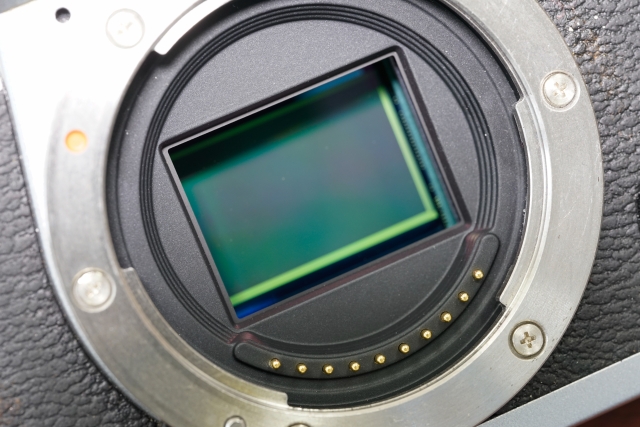What is a pixel? What kind of structure is it? If you have such questions, please read them on this site. If you want to know about the image sensor as a whole, please check the following article, which also describes it.
So what is a pixel? Simply put, a pixel is the part that converts light into an electrical charge. This operation is called photoelectric conversion. The area circled in red in the image below is a pixel, and a single pixel only measures the brightness of a single point. When these pixels are assembled in an array, a single image can be produced.

There are two types of pixel structures: the three-transistor pixel and the four-transistor pixel. Here, we will explain the two pixel structures.
Three-transistor pixel structure
First, let us discuss the three-transistor pixel structure. As the name suggests, this pixel structure uses three transistors.

The three transistors that make up the pixel are a reset transistor, a row selection transistor, and an amplification transistor. The basic operation of this pixel structure is that light enters the PD and photoelectric conversion generates an electric charge. The charge is stored in the PD, and the potential of the PD changes. Here, the PD potential is read out from the source follower circuit and acquired as Vsig. The reset transistor is then turned on to reset the PD, and the voltage immediately after is read back to obtain Vrst. By taking the difference between these two signals, fixed pattern noise can be removed. On the other hand, in this pixel structure, Vsig is acquired first and then Vrst is acquired. In this case, there is a problem that reset noise cannot be removed because there is no correlation between the two signals.
Four-transistor pixel structure
The three-transistor pixel structure had the problem that reset noise could not be eliminated. The newly developed pixel structure is a four-transistor pixel structure. As the name suggests, this pixel structure uses four transistors. It is a three-transistor pixel structure with the transfer gate TX and floating diffusion layer FD added to the three-transistor pixel structure described earlier.

The operation of this pixel structure is that signal charge is accumulated in the PD by incident light. At that time, noise components accumulated in the FD are removed by turning on the reset transistor. The potential of the FD immediately after the reset is assumed to be the readout Vrst. Next, the signal stored in the PD is transferred to the FD by turning on the transfer gate TX. Since the FD potential changes due to the signal charge, it is read out as Vsig. At this time, the difference between Vsig and Vrst is taken and the signal is output. In the three-transistor pixel structure described earlier, there was no correlation because Vrst was obtained from the next frame. On the other hand, in the four-transistor pixel structure, Vrst is acquired first, so Vrst and Vsig have the same reset noise. Therefore, by taking the difference between the two, the reset noise can be removed.
This four-transistor pixel structure allows the use of embedded photodiodes. This structure is a technology originally used in CCDs, but has now been adopted in CMOS image sensors. (A major invention) The use of this structure has made it possible to suppress the generation of dark current that used to occur on the surface of the PD, thus accelerating the development of low-noise CMOS image sensors.
Summary
Here is a summary of this article.
Q.What is a pixel?
A.The part of an image sensor that performs photoelectric conversion.
Q.What is the difference between a 3-transistor type pixel and a 4-transistor type pixel?
A.A 4-transistor type pixel has a structure with a transfer gate added to the 3-transistor type.
The difference is whether the voltage is acquired at the PD or after transfer to the FD.
Thank you for reading this far. If you like, please register your bookmark.



コメント